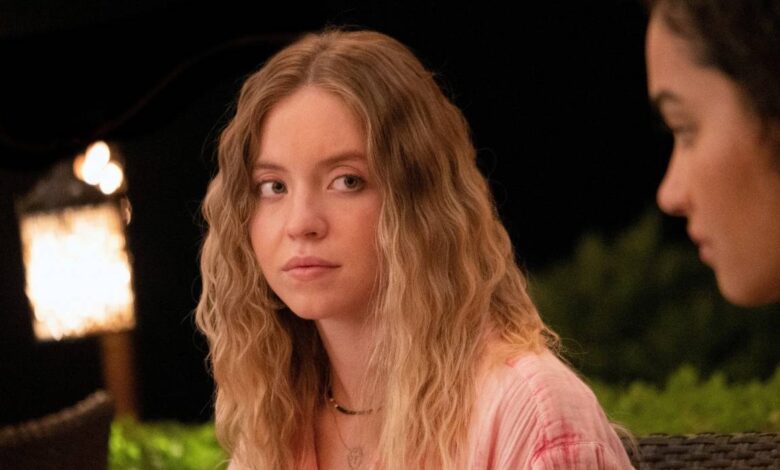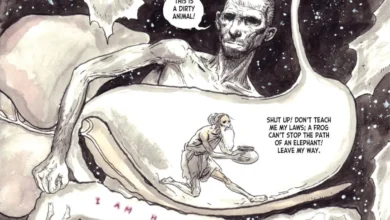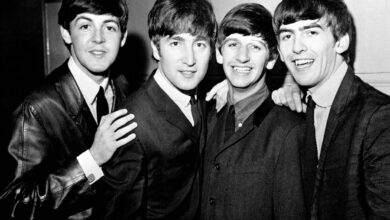9 TV Shows That Lied About Being Anthologies

Variety is indeed the spice of life, and for decades, anthology shows have appealed to viewers by serving a buffet of stories, each with different themes, characters, and moral lessons. These types of small-screen productions spare viewers the burden of keeping up with one major arc for years, as each season or episode has a self-contained story. Ordinarily, the anthology format tends to be relied upon more by television producers than film directors, since it’s easier to tell multiple stories through different episodes than in a 90-minute or 120-minute timeframe.
However, there have been several instances of shows being marketed as anthologies because of their seasonal or episodic format, only for them to later incorporate serialized elements like shared universes, recurring characters, sequels, and the same settings. Even though such creative choices are made in good faith, to ensure that audiences remain loyal, the narrative route might disappoint those who signed up due to the appeal of tiny bitings, not a full-course meal.
Here are 9 TV shows that basically lied about being anthologies.
‘Easy’ (2016 – 2019)
Easy takes it easy. The Netflix comedy-drama follows several Chicago residents, all trying to navigate common issues such as love, friendship, and current events. Each episode focuses on a different set of characters, each with their own quagmires.
Starts Easy… then Becomes Hard
The environment is important, and in Easy, Chicago’s grey reinforces the repressive nature of the characters’ unhappiness. The show is almost flawless, though, on occasion, the attempts at developing characterization and engaging the viewer’s sentimentality tend to be half-hearted and fruitless.
Given its simplicity and the autonomy of the episodes, the comedy-drama is perfect to watch if you simply need to relax. Regrettably, viewers are still required to keep up with a few recurring narratives, such as the woes and triumphs of the married couple, Kyle (Michael Chernus) and Andi (Elizabeth Reaser). Their story was first introduced in Season 1 and was revisited in Season 2 and Season 3, with future episodes examining how their choice to enter into an open relationship affected them. It’s all fun, but it isn’t what series creator Joe Swanberg promised us.
‘Marvel’s What If…?’ (2021 – Present)
Marvel’s What If…? is an animated series on Disney+ that reimagines major MCU events by asking a simple yet radical question: what if things happened differently? Each episode introduces a new timeline, with scenarios like Peggy Carter becoming Captain Carter, T’Challa replacing Peter Quill as Star-Lord, and a world overrun by Marvel Zombies.
What If It Wasn’t an Anthology?
At first, What If…? seemed like the purest kind of anthology storytelling, giving viewers bite-sized adventures free of continuity baggage. The show even leaned into its comic book origins, where alternate realities and “Elseworld”-style stories have long been a staple. But over time, the promise of stand-alone tales began to collapse. The Watcher (Jeffrey Wright), initially just a narrator, emerged as a recurring figure who tied the multiversal strands together, and the Season 1 finale pulled characters from across earlier episodes into one crossover.
Season 2 doubled down, weaving in more callbacks and continuing certain arcs, making it less of a pick-up-and-watch anthology and more of a serialized expansion of Marvel’s multiverse saga. While the animation and bold creative swings remain dazzling, viewers expecting cleanly disconnected one-shots might be frustrated to find the show edging closer to a serialized team-up story than a true anthology.
‘American Horror Story’ (2011 – Present)
Each season of American Horror Story explores a different horror subgenre. Featuring recurring actors playing different cast members, the show’s 12 chapters revolve around a haunted house plot, an Asylum story, a Coven saga, a freak show troupe, a haunted hotel, a haunted farmhouse, a cult, a summer camp, an extraterrestrial conspiracy, LGBQT-targeted killings, and a Hollywood conspiracy, in that order.
Numerous Crossovers
American Horror Story is a brilliant small-screen offering, hoisted by the work of high-caliber actors who ensure their characters are much more than the bog-standard two-dimensional villains. But it’s also a frustrating show. Initially, showrunners Ryan Murphy and Brad Falchuk resist the temptation to stitch everything together, only to embark on a giddy, passionate affair with continuity that’s also clouded by ambivalence. What’s the glory of making anthology shows if they’re just serials at heart? One season is even a sequel-crossover of two previous seasons.
The Emmy-winning series goes back on its anthology promise several other times. The Murder House from Season 1 appears in a few other chapters. Season 8 also features the witches from Season 3 and so on. Those hoping to only watch specific seasons will thus find themselves missing out on some key developments.
‘True Detective’ (2014 – Present)
True Detective features different lawmen tackling various challenging cases each season. Some of the stories featured include the hunt for an occult-linked killer in Louisiana, the search for two missing children, and the disappearance of eight men at a research station. Most lead characters are played by Hollywood stars, notably Colin Farrell, Matthew McConaughey, Mahershala Ali, and Woody Harrelson.
Taking in the Hardest Cases
Throughout its run, True Detective has often been praised for its acting, cinematography, screenplay, and direction. The HBO series requires the utmost patience, as it’s the proper slow-burning kind. Events move more slowly than a 50-year-old tortoise, but the rewards come in plenty. Consequently, the awards have kept coming.
Given how exhausted each season leaves viewers, it would have been great for the stories to be the self-contained kind. However, the universe opened up in Season 3, where the child exploitation network from Season 1 was mentioned. The third season also features news clips from the Louisiana occult saga. On the brighter side, the threads are thin, so this show is still ideal for those eager to watch each season separately.
‘Solos’ (2021)
Solos was Prime’s answer to Black Mirror and, for a while, it held a record as the streaming giant’s most expensive show. Unfortunately, it was never renewed for a second season. Like the critically acclaimed Netflix sci-fi series, it mainly looks at the dark side of technology.
Episodes Aren’t Really Solos
A strong cast that includes Helen Mirren, Morgan Freeman, Anthony Mackie, Anne Hathaway, and Constance Wu made Solos a dream show for all who care about good performances. Everyone is also likely to be amazed by how it tackles AI. Overall, this intelligent, dark sci-fi drama turns a classic good-tech/bad-tech mouse fable into a shattering morality play. The indelible scene where an AI-smart home system urges a woman to be more outgoing is worth the price of admission on its own.
Those who signed up for independent storylines soon become disappointed because the connections quickly become obvious. Otto, an AI system, appears in numerous episodes. Things become more blatant in the finale, where it’s revealed that Morgan Freeman’s character, Stuart, is a memory thief/junkie who is connected to almost every other character.
‘Black Mirror’ (2011 – Present)
Created by Charlie Brooker for Britain’s Channel 4, Black Mirror was eventually acquired by Netflix and has now become one of the streaming service’s biggest hits. Set in near-future dystopias, the episodes mostly explore the negative effects of technological advancements. The show occasionally deviates into genres like horror and drama, too.
Easter Eggs Galore
Black Mirror initially sold itself as an anthology, but Brooker broke the rules as the years went by. Numerous Easter eggs spotted throughout the series suggest a shared universe, though it’s baffling how a connection might happen, yet each dystopia is wildly different from the other. Sections of the fandom have thus hinted at the possibility of a multiverse.
For example, the neural research and technology company, TCKR Systems, is either mentioned or appears in numerous episodes. The museum in the Season 4 episode, “Black Museum,” also displays artifacts from previous stories. These include the White Bear Mask (which also appears in a few other episodes) and the Arkangel tablet. Beyond that, the episode “USS Callister” has a sequel.
‘The White Lotus’ (2021 – Present)
The White Lotus traces the evolving relations of the guests and staff over a week spent at a branch of a fictional luxury global resort hotel chain called “The White Lotus”. Season 1 was filmed and set in Hawaii, Season 2 in Sicily, and Season 3 in Thailand. There is a dark turn in each chapter, so someone must break through the wall of silence and secrets and solve the mystery.
Beautiful and Engrossing
In the crucial area of cinematography, The White Lotus shows some genius. A master of handheld camerawork, creator and director Mike White contrasts extreme close-ups with heavy focus shots of the picturesque environments. Leaves and strands of hair seem to caress the lens as the camera leisurely moves around the stars. The stories are all airtight, too.
But does the show deserve the Emmy it received for Outstanding Limited or Anthology Series? Tanya McQuoid (Jennifer Coolidge)’s arc disqualifies the HBO gem from that categorization since she appears in both the Hawaii and Sicily chapters. Her love interest, Greg, and her assistant, Portia, also appear in future seasons. Beyond that, characters sometimes reference past events.
‘Fargo’ (2014 – 2024)
Based on the Coen Brothers’ 1996 film of the same name, the coarse, lacerating Fargo presents different crime sagas in different timelines, all playing out in the American Midwest, primarily in Minnesota. We see stories involving a murderous drifter, a ‘70s mob war, a ‘50s Kansas City crime syndicate, a kidnapped housewife, and a political conspiracy.
Better than the Movie
Equal parts crime thriller and a bald critique of greed, Fargo excels through the choices of its characters, whose cock ups keep accumulating. As associates and paymasters desert them, they are often reduced to sweat-dripping shells of their former selves, frantically trying to evade justice whilst clinging to their stale delusions.
Overall, there isn’t much to complain about, but the overlaps will annoy those who prefer a strict adherence to the anthology format. Characters like Lou Solverson, Mr. Wrench, and Hanzee Denton appear in multiple seasons. Additionally, specific powerful families are also mentioned in multiple seasons. The FX show is thus guilty of lying about independence only to rely on loose continuity across several decades.
‘Inside No. 9’ (2014 – 2024)
BBC Two’s Inside No.9 consists of 30-minute ‘self-contained’ stories, each with new characters and settings, but all starring series creators Steve Pemberton or Reece Shearsmith as different characters. All episodes are set in a location related to the number 9 in some way, and genres vary from episode to episode, ranging from comedy to horror.
British Brilliance
In Inside No.9, the climaxes of all the stories are feats of ahead-of-their-time moments that take your breath away. Beyond that, the acting is superb, while the genre-blending comes off as refreshing rather than annoying. Today, this remains one of the few shows to maintain their 100% scores on Rotten Tomatoes.
Upon looking keenly, a viewer notices recurring symbols. A hare statue appears in multiple episodes, and so do specific paintings, journals, and the fictional show, Hindsight. Besides that, the episode “Tempting Fate” directly references another episode (“Séance Time”), confirming that they are narratively linked. Thankfully, these connections are the subtle kind, unlikely to frustrate any viewer.
Source link



